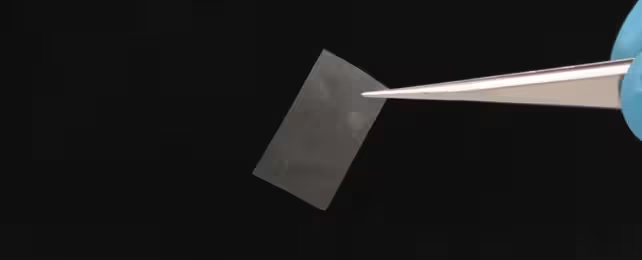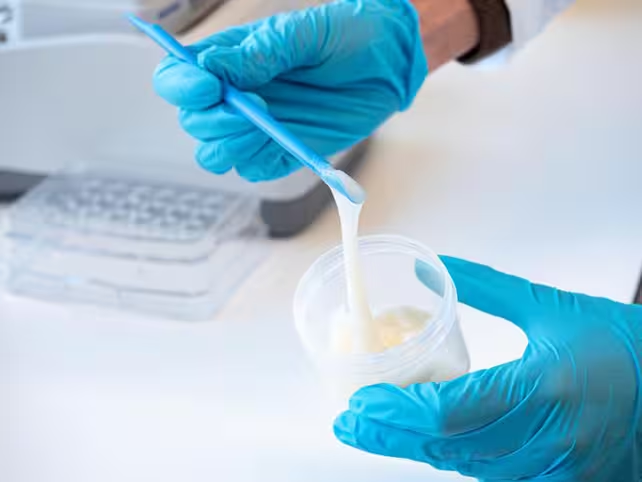4 Minutes
A New Generation of Biodegradable Materials: Alive and Sustainable
Innovative breakthroughs in materials science are paving the way for sustainable alternatives to traditional plastics. Researchers at Empa, the Swiss Federal Laboratories for Materials Science and Technology, have unveiled a remarkable new material that is not just flexible, tough, and biodegradable—but also alive. This living biopolymer, derived from the mycelium of the split-gill mushroom (Schizophyllum commune), offers a promising alternative to petroleum-based plastics contributing to global pollution.
Biological Engineering: Harnessing the Power of Fungi
At the core of this research lies the mycelium, the intricate, thread-like root structure of fungi. Rather than simply killing off the cells as is common in processing biomaterials, the Empa team developed a method to retain much of the mycelium’s natural biological activity throughout processing. By gently transforming the mycelium fibers into a liquid suspension, they created what is now called Living Fiber Dispersions (LFD). This gel-like material can be molded into diverse shapes, making it as adaptable as many synthetic plastics.
The real scientific leap comes from utilizing not just the fungal cells but also the extracellular matrix—the array of biological substances the mushroom naturally produces to build structure and provide unique properties. "The fungus uses this extracellular matrix to give itself structure and other functional properties," explains Ashutosh Sinha, materials scientist at Empa. "Why shouldn't we do the same?"

Properties and Potential Applications of LFD
Through the careful cultivation of a specific strain of Schizophyllum commune, the researchers induced the abundant production of two vital molecules: schizophyllan, a robust polysaccharide, and hydrophobin, a protein aiding in surface interactions. These compounds are crucial in imparting strength, flexibility, and durability to the living material.
One principal application for LFD is in thin, biodegradable films with exceptionally high tensile strength. The team envisions uses where plastic alternatives are most needed—such as compost bags that decompose alongside their organic contents, or next-generation, ultra-thin biodegradable batteries for electronics.
Moreover, LFD functions effectively as a natural emulsifier, enabling the mixing and binding of substances that typically resist combination. Such properties are key in food science and cosmetics, found in everyday products including ice cream and shampoo. Owing to its living nature, the material continues to generate these beneficial molecules over time, which, as Sinha notes, could make these emulsions uniquely stable long-term—a rare trait in this field.
Safety and Edibility: Rethinking Bioplastics
A standout feature of this mushroom-derived material is its safety profile. Sourced from an edible fungus, LFD is non-toxic and safe for human consumption, setting it apart from current bioplastics that may still harbor toxic additives. This opens new doors for its incorporation into food packaging and cosmetic applications, where non-toxicity and biodegradability are critical.

Looking Ahead: The Future of Living Materials
While LFD already demonstrates significant promise, the Empa scientists see this as just the beginning. By fine-tuning the fungal strains and growth conditions, it may be feasible to customize living materials to possess varied mechanical, chemical, or even electrical properties—potentially enabling on-demand materials manufacturing inspired by nature’s own strategies.
Nature has long inspired technological innovation. From drug delivery vehicles to self-repairing textiles, researchers are increasingly exploring fungi-based biomaterials as versatile alternatives to synthetic plastics. Materials that bridge the natural and synthetic realms offer unique benefits, such as biodegradability, self-regeneration, and environmental responsiveness. "Biodegradable materials always react to their environment," remarks Gustav Nyström, another materials scientist at Empa. "We want to find applications where this interaction is not a hindrance but maybe even an advantage."
Conclusion
The development of living, mushroom-based materials marks a significant advance in our journey towards circular, sustainable materials economies. As the world confronts the mounting crisis of plastic pollution, innovations like LFD exemplify how scientific ingenuity paired with nature’s wisdom can lead to new classes of materials that are safe, biodegradable, and uniquely dynamic. With ongoing research and broader exploration into mycelium and fungal biotechnology, the future of green materials science looks not only alive but thriving.



Comments